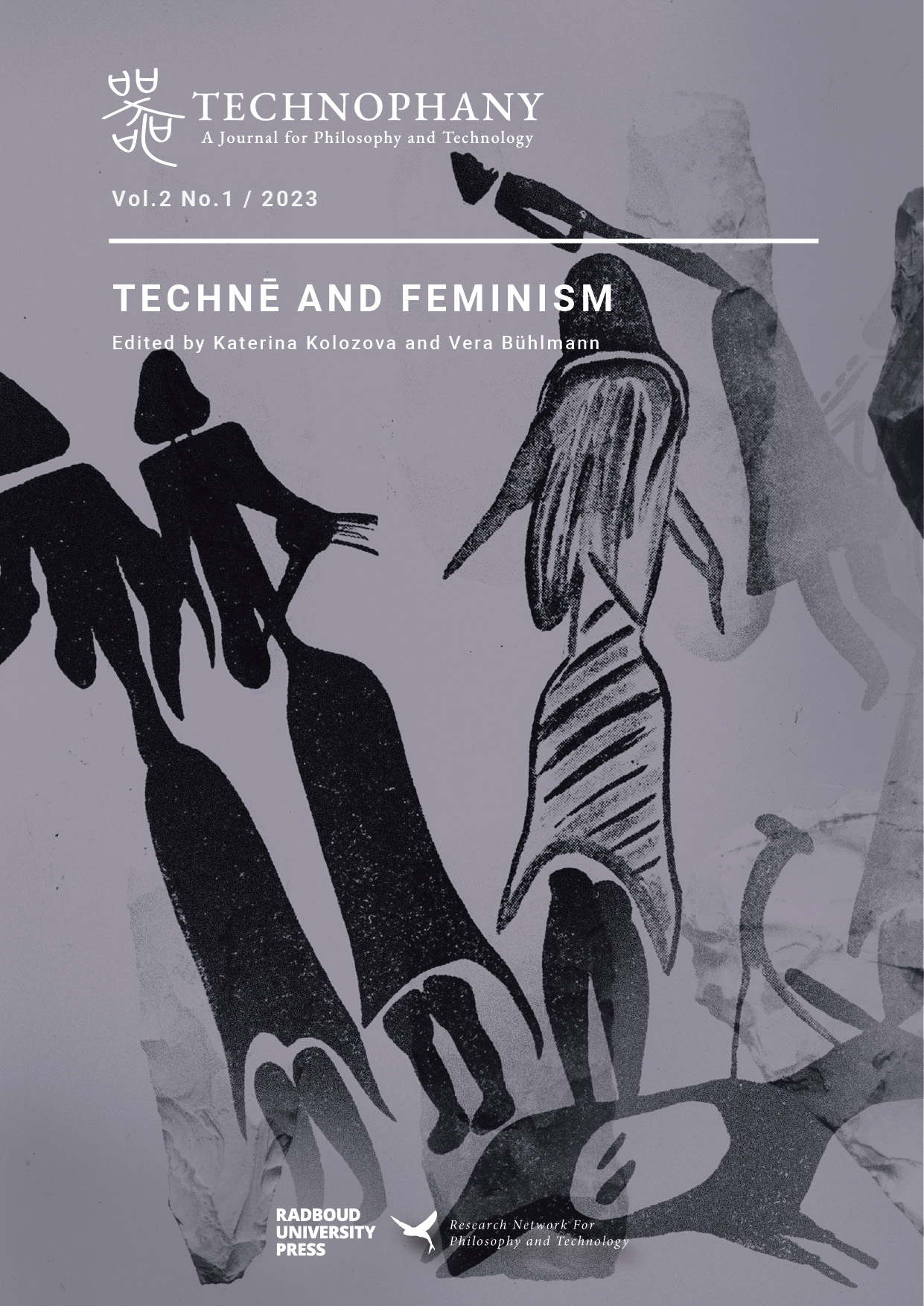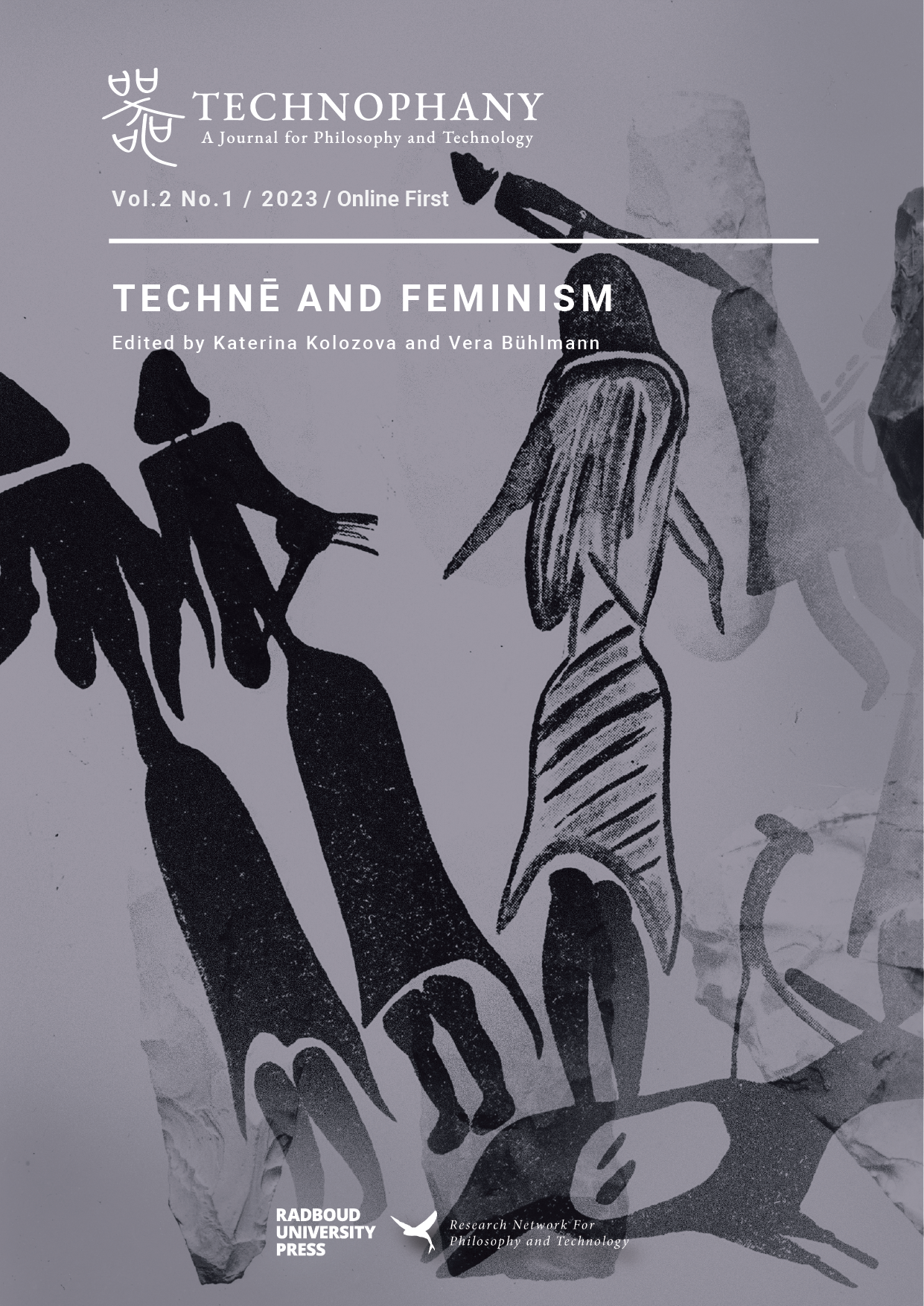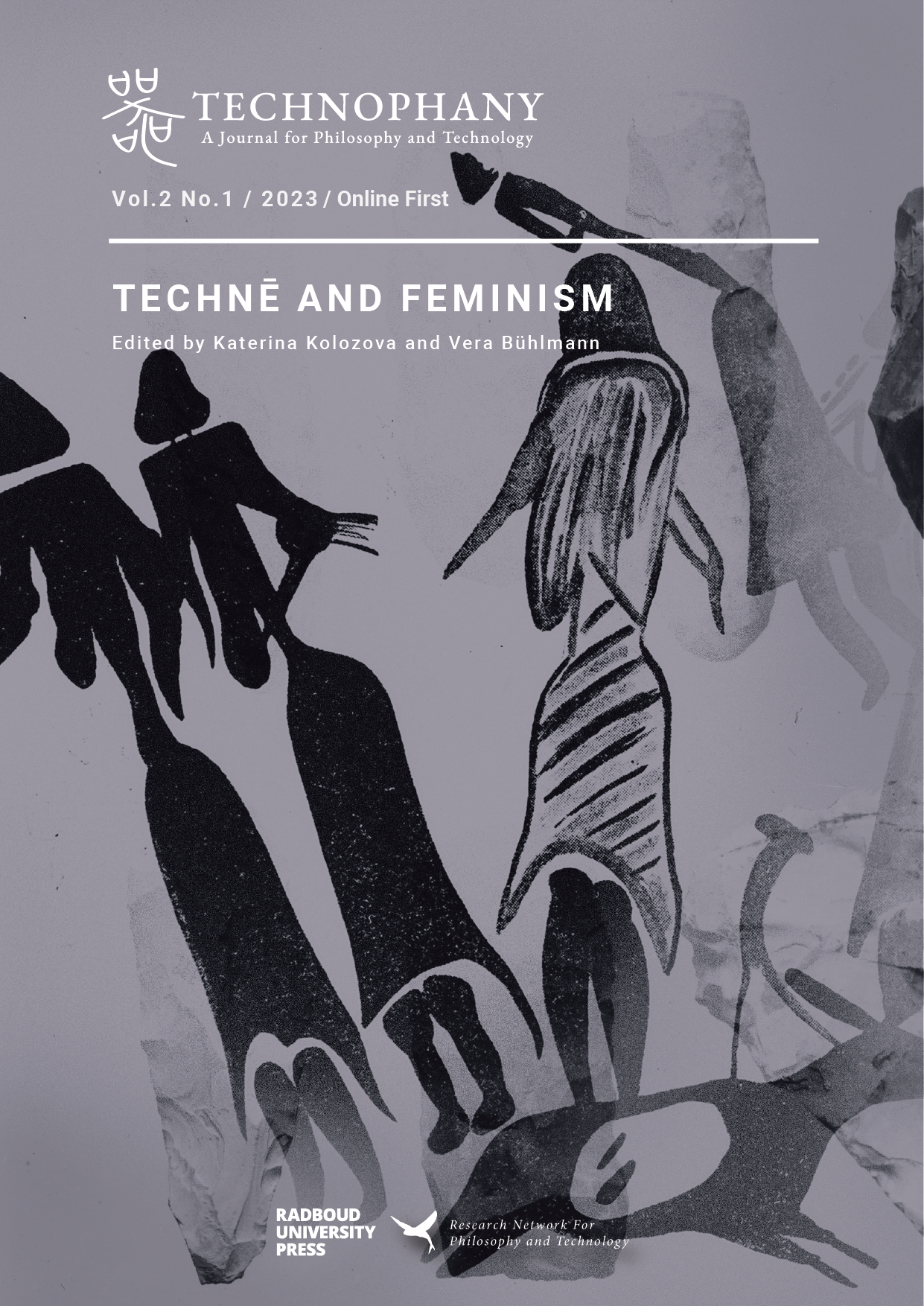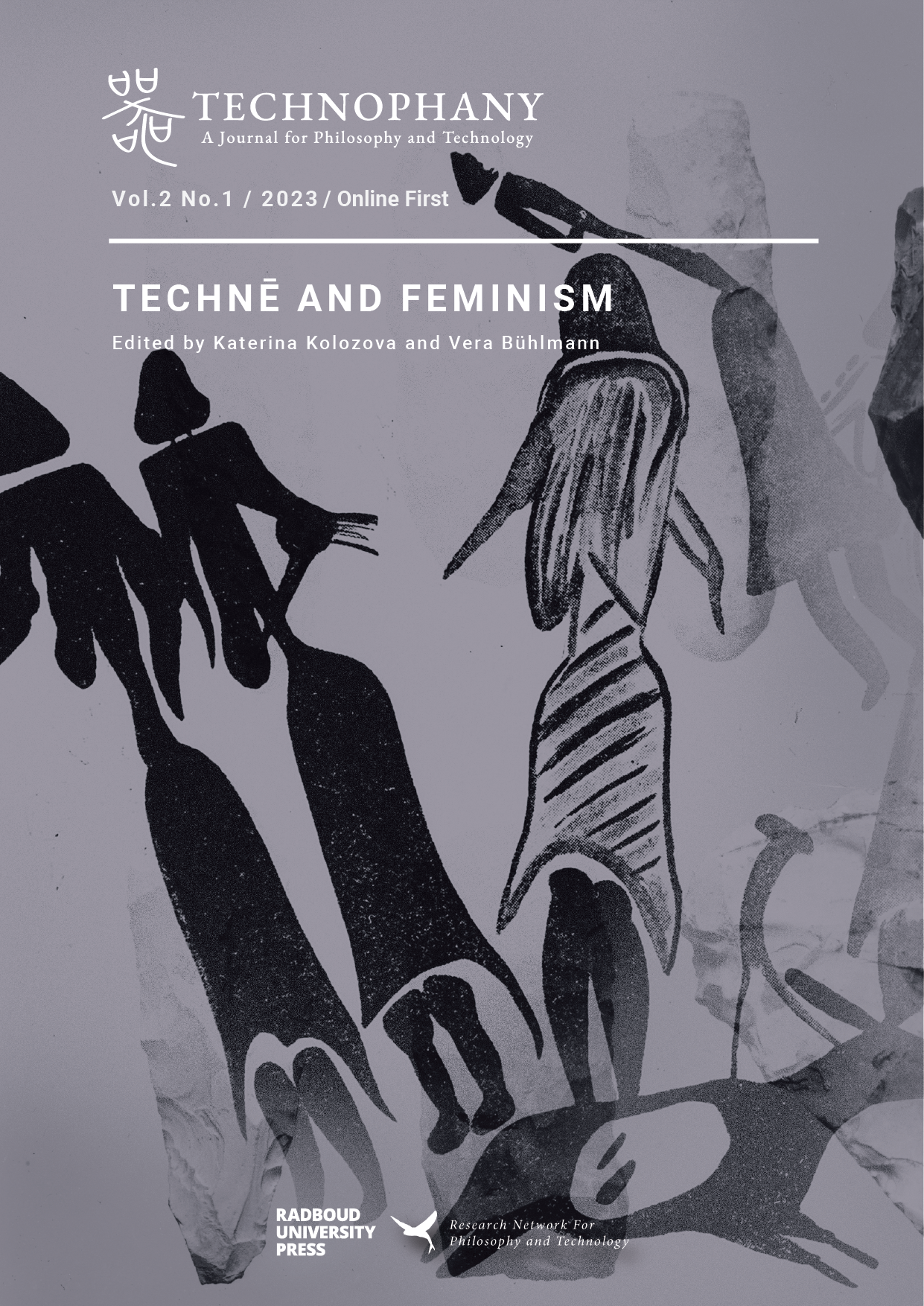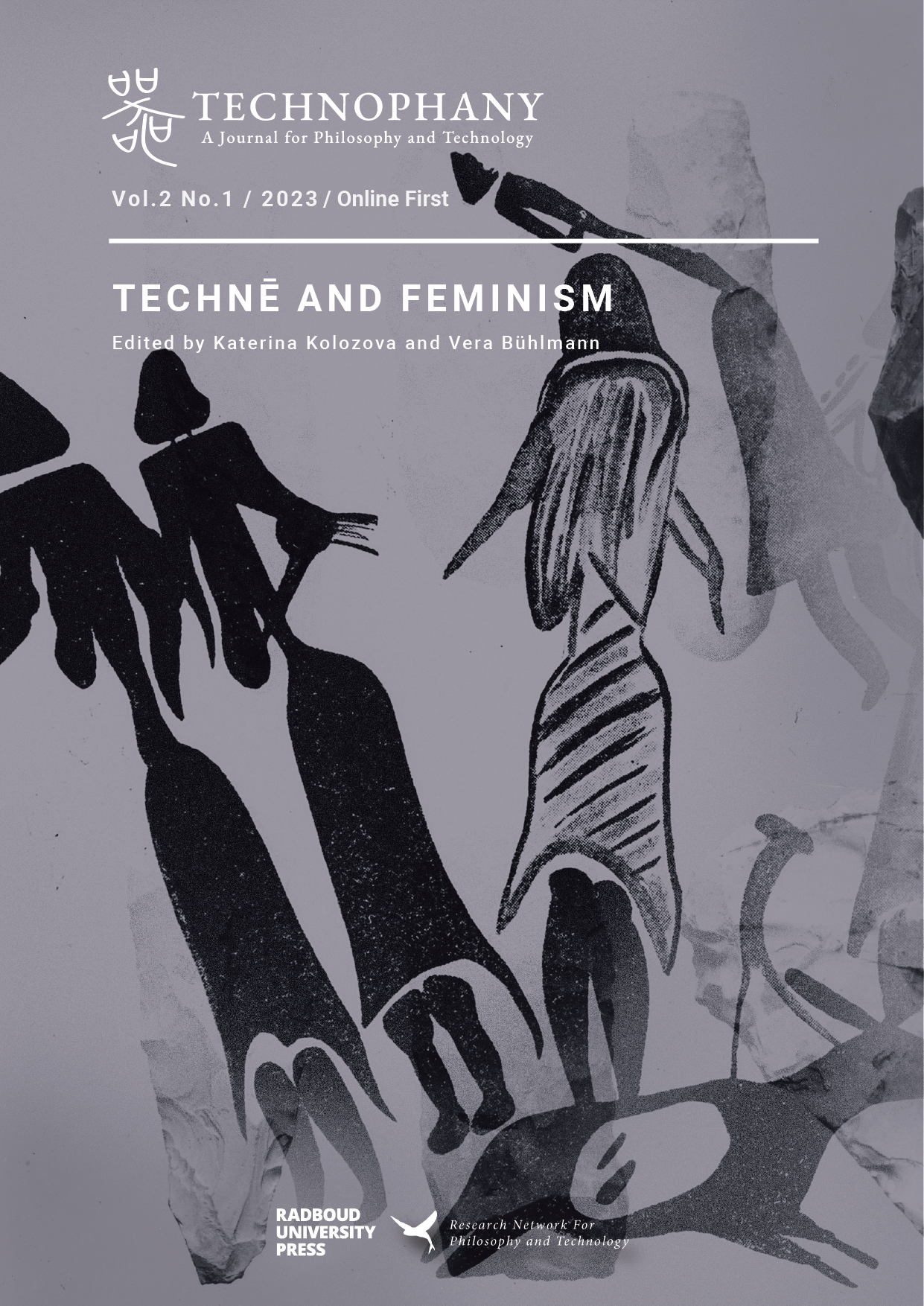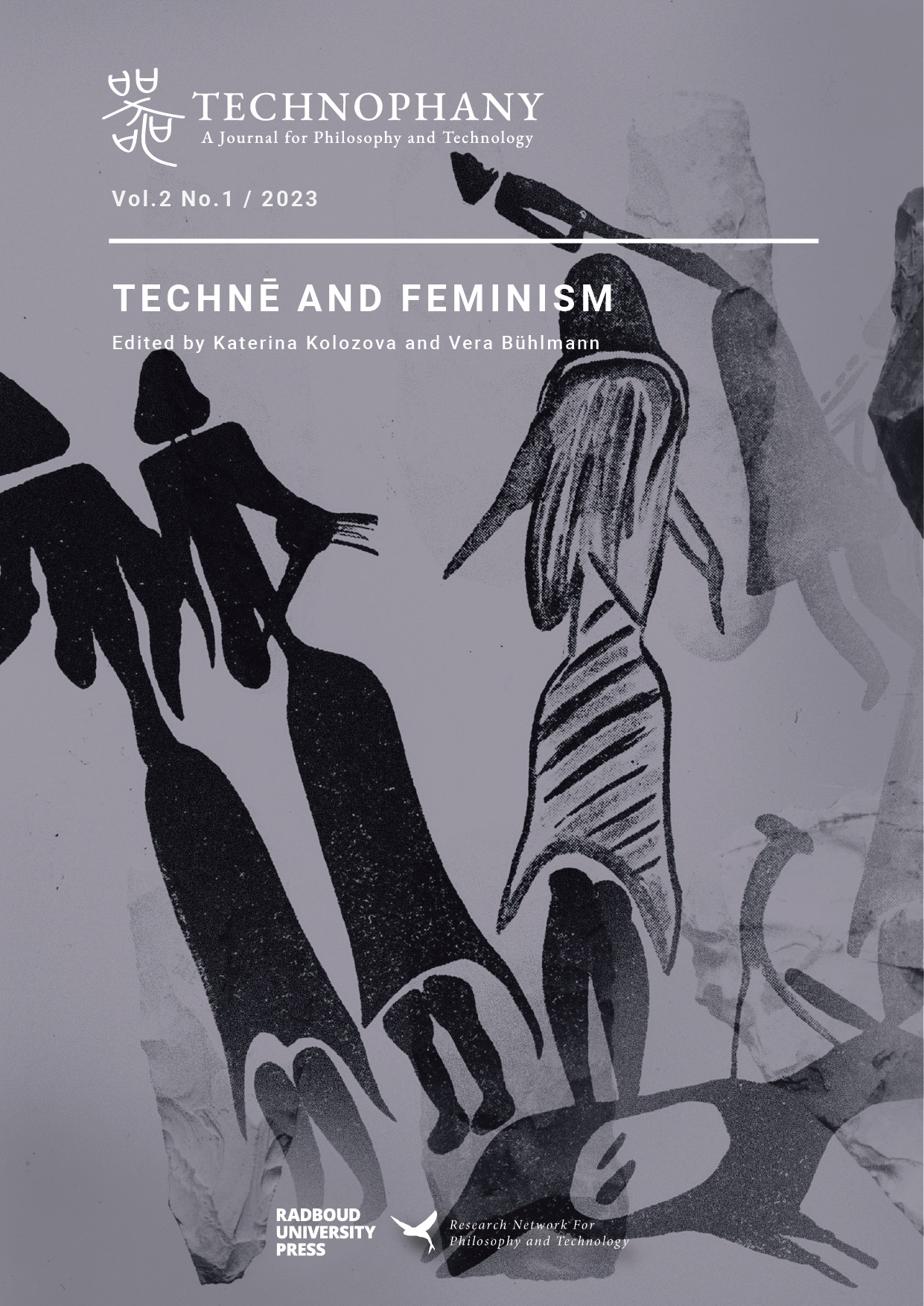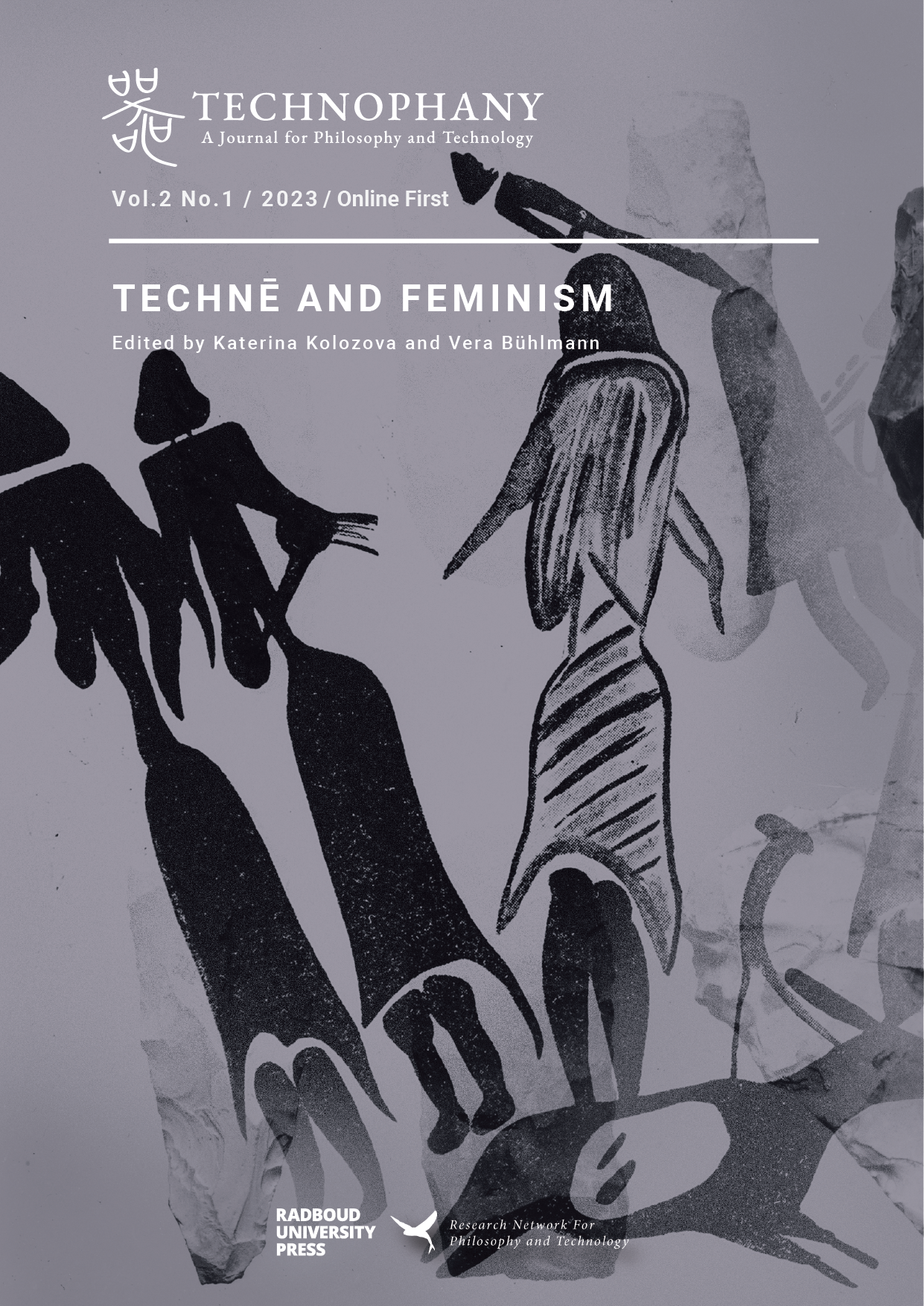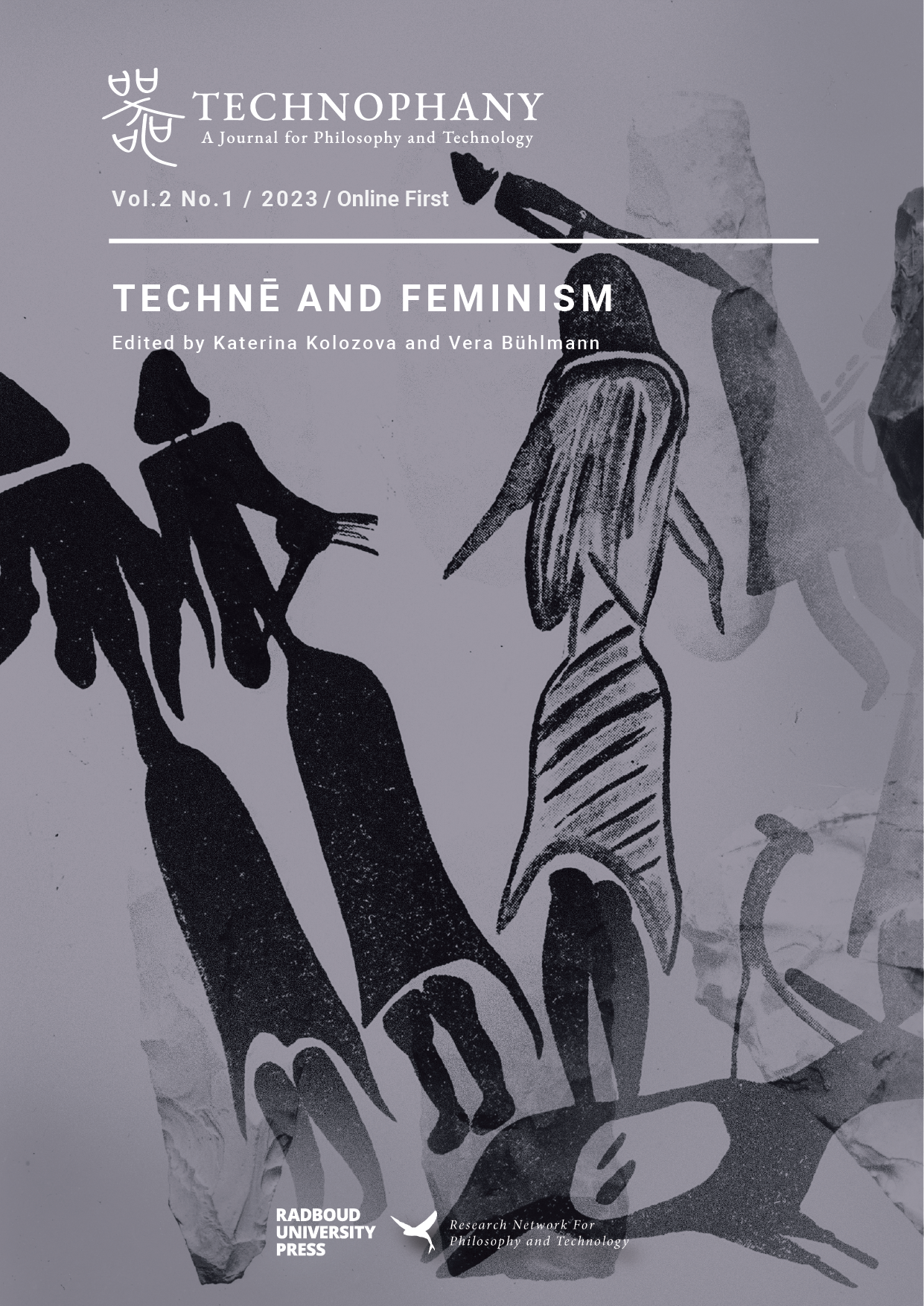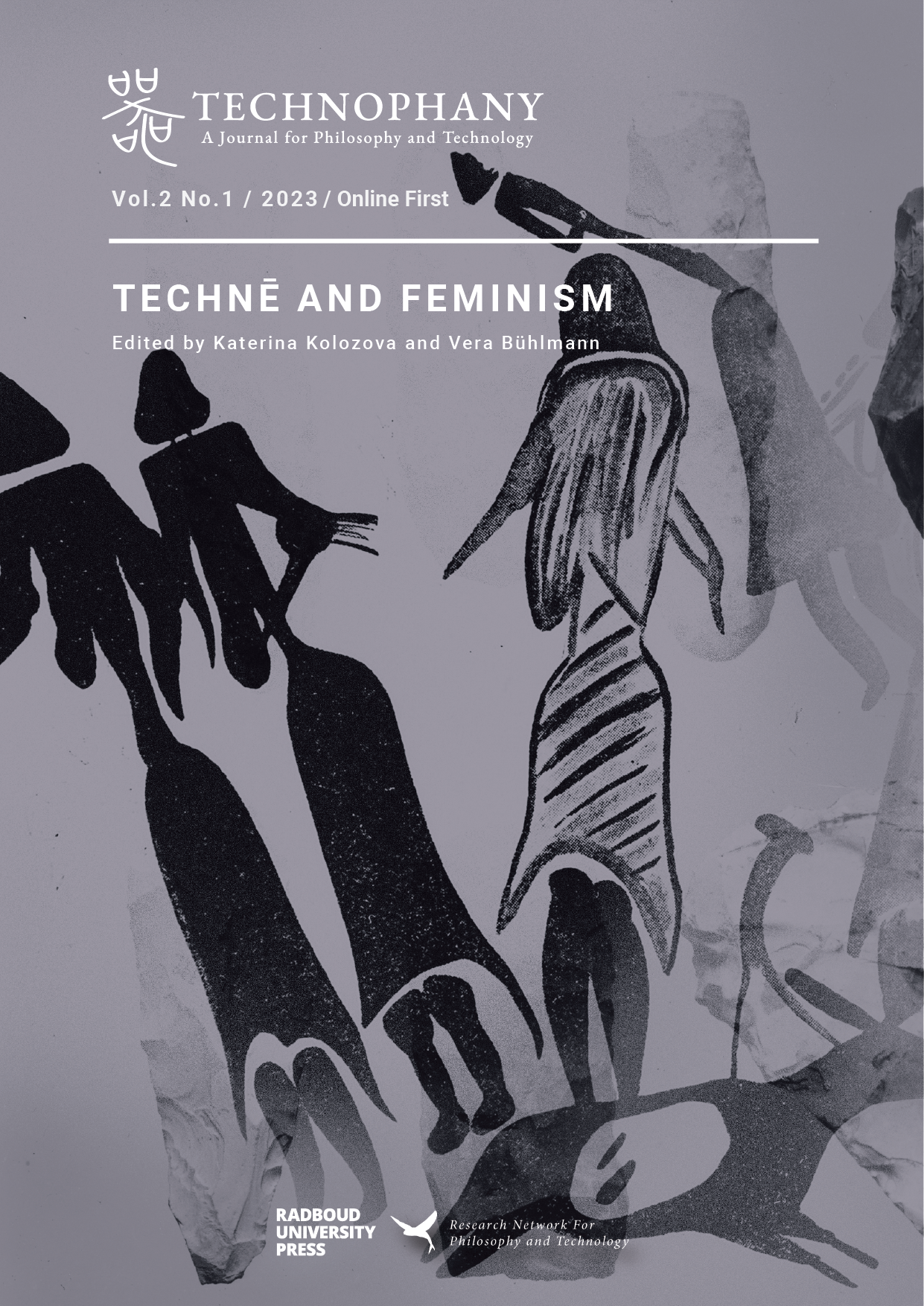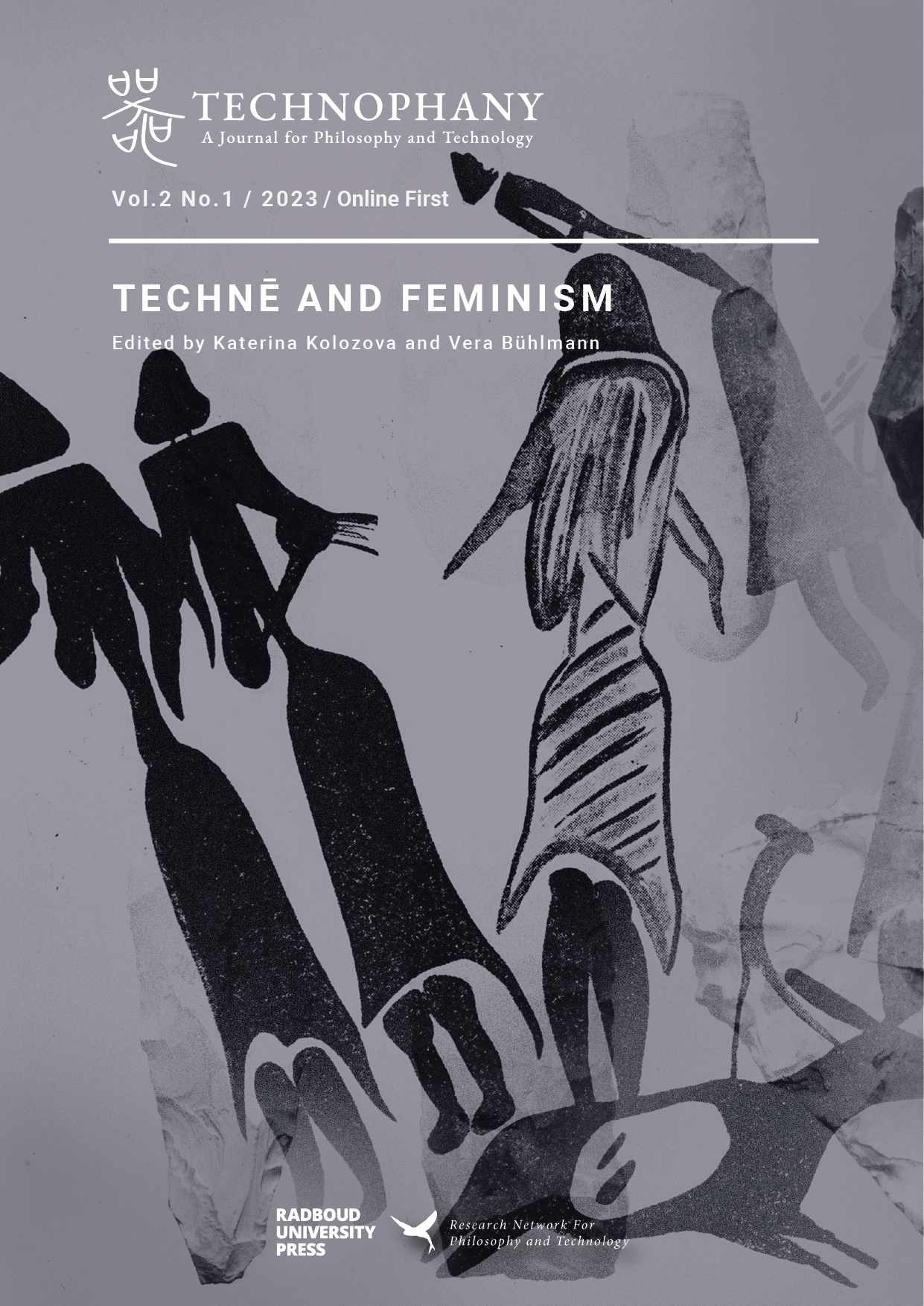Vol. 2 No. 1 (2023): Technē and Feminism
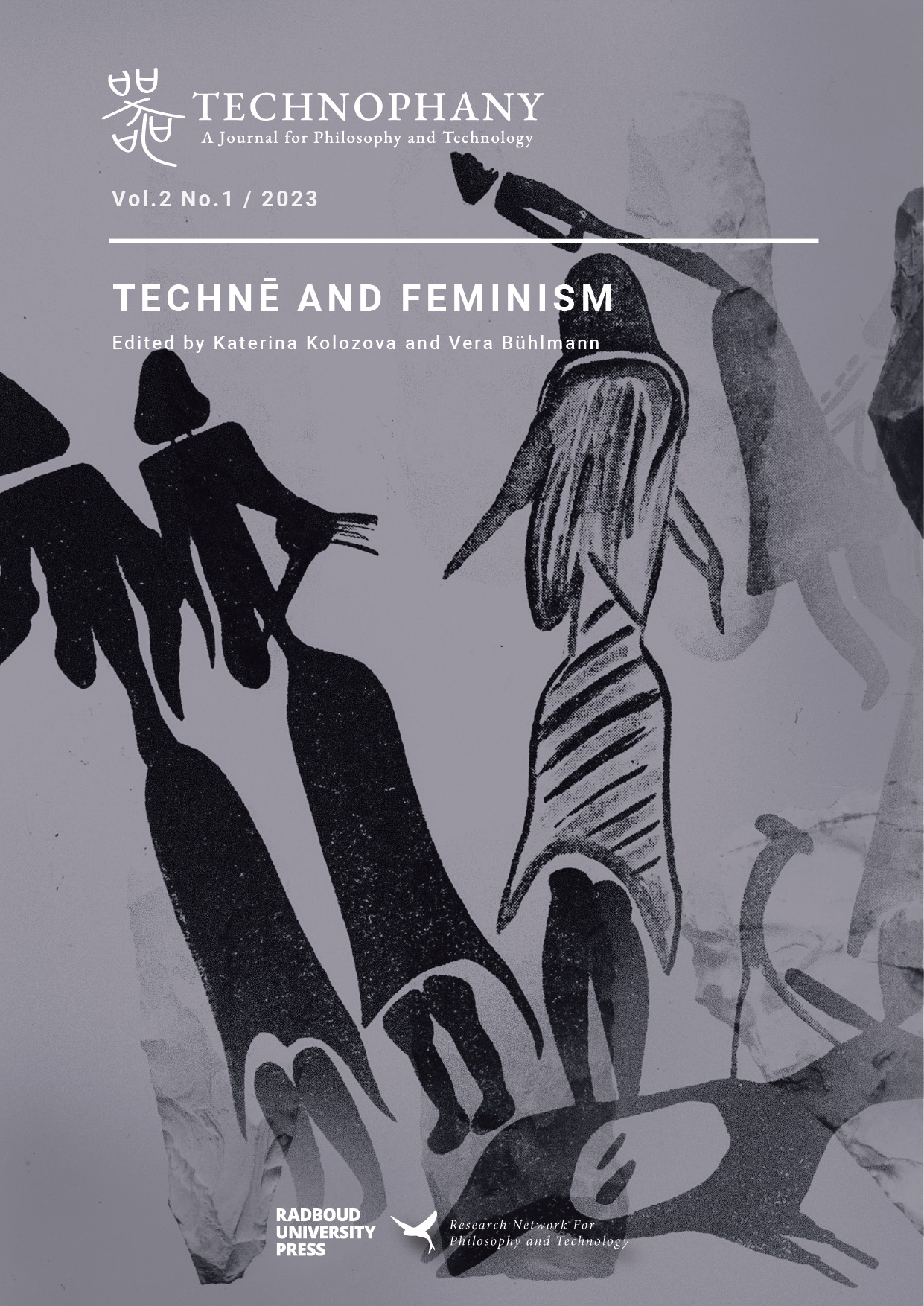
Departing from the premise that the poststructuralist paradigm still reigns supreme in feminist and gender theory, that is, despite the niche efforts made in the past two decades to challenge it linked to the so called “speculative” turn or the materialisms (and realisms) emerging from the feminist field itself (such as the Utrecht School, inspired by Rosi Braidotti), we set the call for papers for the issue before you in terms that would invite authors ready to challenge the dominant epistemic framework. We invited papers that engage with materialism(s), realism(s), sciences and projects engaged in rethinking the post-human beyond the poststructuralist (and, we dare say, postmodern/ist) norm.
Full Issue
Technē and Feminism: Articles (edited by Katarina Kolozova and Vera Bühlmann)
-
Introduction Is the Poststructuralist Feminist Episteme in Crisis?
Introduction to Technē and Feminism, Vol. 2 No. 1 (2023)
-
Machine-Thought and the Political Order
The most widespread statement of political philosophy is presented here in the simplified and trivialised form of “man is X; he must become Y. ” Man must do so at the same time for himself, for his own survival, but also for the good of all, of the Community, of the City: the plurality must absolutely, in any way whatsoever, give way to unity, subject to [sous peine] and under threat of chaos. The essential question found confronting political doctrines, moreover since the prominence of the idea of democracy is the following: how to bring about the existence of a united society across a heterogeneous social body? The response from philosophy articulates itself around three principle schemas: the theoretical construction of a unified community under the order of similar laws to those of nature (Platonic schema); the search for the best regime, which will have as its ultimate end the moderation and perpetual regulation of conflicts, by an optimal combination of freedom and stability (Aristotelian schema); and the theorisation of the “end of politics” by the locating of a “social wrong” inscribed in a structure doomed to collapse by the practical negation of its ideological foundations (Marxian schema and derivatives). The mode of thought which imposes itself here is decisional. Beyond the third schema which constitutes in some way a meta-political critique, and necessitates that it alone has a particular analysis, in the two preceding, man constitutes a kind of material – raw or primary, depending – that philosophy will work on, and sculpt to give it a form that harmonises fully with the Whole that it prescribes. In political philosophy, we always turn more or less around the “Let’s make man” of Hobbes, that is, around the technical transformation of a material given. Or to say it otherwise: the creation of an oeuvre from crude and imperfect elements, an oeuvre thought like a masterpiece – that is to say, one that contains within it an idea of perfection and permanence – but doomed here to serial reproduction.
-
The Physiology of Money Containment and Circulation in the Alternative Economy
This article presents an ethnography of alternative currencies that foregrounds the notion of “circulation”. Building upon a long legacy wherein money is equated with a primary life force—being either water or blood—that is contained within a body, “circulation” became a dominant metaphor for the use of money from the mid-seventeenth century onwards. Imagining money as a liquid that flows and circulates means that remedying economic inequalities and injustice is often reduced to a matter of redistribution. Instead, money is itself an institutional project engineered to distribute resources and authority based on a philosophy of growth and accumulation. Alternative currency initiatives aim to re-design, rather than re-distribute, money. Importantly, they believe the technological fix of a circular software system effectively does away with the inequalities of the capitalist mode of production. What happens when on-going practices towards systemic change converge on money and the economic “body” of a local community is imagined as software?
-
Feminism and Finitude
This essay examines the ideological parallels between the transhuman pursuit for immortality and xenofeminism’s call for biological manipulation. Paying particular attention to the patriarchal legacy of technoscience, I identify eugenic principles embedded in the discursive emphasis on anti-naturalism, freedom, and alienation. My intention is to recuperate xenofeminism’s more radical manoeuvres by resituating its aims through a historical materialist approach. Specifically, I suggest a reinterpretation of nature as inherently technological. In so doing, I argue for an alliance between xenofeminism and ecofeminist political economy to engage a discursive redirection toward degrowth and dealienation. I then build on Rosi Braidotti’s (2013) posthuman theory of death to suggest an uncomfortable biopolitical expansion: a biopolitics for the Anthropocene should not only seek an equal right to live, but also an equal predisposition to death. My countervailing materialism centres a politics of finitude through an analysis of the vital-fatal entanglement in the body’s reproductive capacities.
-
Edge{s} of the “Anthropocene” Standard and Non-standard Post-humanisms
This article examines three distinct onto-political modes: the human-centric onto-politics of ‘centring the human’, post-human onto-politics of ‘de-centring the human’, and a third mode that rejects and argues against these options in favour of jettisoning the human/non-human dyad altogether. Instead of placing humans ‘in or on the loop’ with other species, a third model would place humans ‘out of the loop’ of command. I argue that contrary to claims, the post-human declaration of ‘de-centring the human’ cannot be considered ‘post-anthropocentric’ (implying the abolition of anthropocentrism), though it can be considered ‘anti-anthropocentric’. Only the onto-politics of abolition would truly be post-anthropocentric, because only it would eliminate the human/non-human conceptual dualism upon which the onto-politics of centring and de-centring is based.
-
Irigaray’s Two and Plato’s Indefinite Dyad The Space of Thinking
The following hopes to bring Plato’s unwritten doctrines into proximity with Irigaray’s concept of the Two as found in works like To Be Two or I love to you. By focusing on the the indefinite Dyad, Plato's reported co-archai with the One, it will be evidenced that Platonism begins and ends with a One which is not One (a kind of Two). Further, in this Dyad's failure to be One, it ultimately comes to possess its own productive and destructive power or, to use Irigaray's words, to love toward the Other in such a way as to produce or give birth to other others, real difference. Finally, Irigaray’s conception of the Two has dramatic social implications for her as a feminist, grounding a transformation of the political order of things. Due to this political import, the final section shifts to questioning whether Plato’s reported protological principles, the One and the indefinite Dyad, could perform a similar work.
-
Going Sibylline On Fortune and Technique
Throughout the sixth chapter of the Aeneid, Virgil conjugates the zigzagging temper of the Cumaean Sibyl as the probabilistic ambivalence of the cosmos itself rather than as its playful or inaccurate duplication. By wrapping “true things with uncertainty”, the Sibyl’s chants cultivate more sensibilities regarding the “paths of fortune” branching the cosmos, thus engaging with the given in multi-linear and inconclusive terms. This essay suggests that, by conceiving such a cosmic fortuity as a public form of subjectivity to be tempered in a sonic key (persona (L.)), the Sibyl’s oracular set-up might be enlivening more ways of engaging with Donna Haraway’s philosophical challenge: the quest for notions of objectivity and subjectivity that constitute one another without abandoning their own purpose. I would like to contend that such a sibylline engagement is an invitation to deploy more feminist lines of flight when it comes to technique’s intertwining with nature. It might offer us instruments to think of the technical and natural as always already enfleshed, yet not so much in keeping with the Promethean claim for “making the given” as in pursuit of enlivening unfamiliar forms of coexistence with the given’s probabilistic ambivalence—a conceptualisation making room for thinking of the technical in terms of syntonization, the calibration of attunement processes involving both gymnastic training and cosmetic fashioning.
-
Karen Barad and the Unresolved Challenge of Collectivity A Case for New Materialisms
In this paper, I start by pointing out that despite their differences, Slavoj Žižek and Karen Barad share an understanding of the notions of relationality, processuality, and immanence as central tenets of materialist philosophy. As I argue, however, it is collectivity that acts in both Žižek’s and Barad’s works as a safety valve that lends immanence, processuality, and relationality their materialist quality. To support this argument, I demonstrate that certain forms of collectivity underlie the passage from Werner Heisenberg’s uncertainty to Niels Bohr’s indeterminacy in Barad’s interpretation of Bohr’s ‘philosophy-physics’. I call those forms of collectivity "collectivity as ontological necessity" and "collectivity as methodological necessity" respectively. However, I claim that there is a further form of collectivity, which I call ‘collectivity as inclusive and holistic overdetermination’, that Barad overlooks and that conditions the indeterminability of indeterminacy. As I argue, the latter also has implications for political agency. I conclude by briefly sketching out how these forms of collectivity can determine the production of subjectivity and, as a consequence, shape the subject’s collective action.
-
Emilie du Châtelet—On Knowledge and Matter A Precursor to Posthuman Feminism’s Approach to Science Making
This paper suggests a reading of the early 18th-century philosopher Emilie du Châtelet’s position on the questions of knowledge and matter as a surprising early precursor to technoscience/ posthuman feminism’s stand on scientific methodology and embodiment. In her 1740 book Institution de Physics (Foundations of Physics), du Châtelet, in an enlightenment fashion, turns to empiricism in an attempt to explain how we acquire scientific knowledge with an aim to account for the physical world and specifically for bodily agency. It is empiricism that leads her to criticise both the Cartesians as well as the Newtonians disembodied account of force. Du Châtelet’s main quarrel with Newton’s theory of bodies arises from its insufficiency to account for matter as vital. It is here that she turns to Leibniz’s metaphysics in a move that, in effect, redefines the premise of reason. Having an insight into her intellectual world at the dawn of enlightenment highlights the tendencies of our scientific paradigm to account for bodies as nonlogical and affirms the technoscience/ posthuman feminist transformative project.
-
Ontopolitics of Equality and Xenoaesthetics of Abstraction
This article explores the relationship between metaphysics, politics and aesthetics in its role of technē within the context of equality. It presents two interconnected arguments. Firstly, it emphasises that equality is situated within the framework of ontopolitics, understood as the convergence of metaphysics and politics. This fusion is grounded in a shared systematic structure within the object’s internal dynamics. Secondly, the article underlines the importance of the mode of human cognition and object presentation in implementing equality. It proposes the xenoaesthetics of abstraction as a regime of action for perception to effectively establish the ontopolitical framework of equality. By challenging prevailing notions of transcendence, the article advocates for a non-hierarchical interior of the object that embraces the mutual constitution of object and subject. It recognises the thing’s capacity to reveal itself to us and be realised through us, emphasising the mobilisation of subjectivities as additional manifestations of the object. This perspective offers a complementary pathway to contemporary critical and activist discourses, promoting the advancement of equality through an ontopolitical focus on objects.
-
Coyote figurations, Techne and Feminism
It is within the framework of situated knowledges in the field of biology and technology studies, in its relation to feminism that the coyote figuration is conceptualized by Donna Haraway. In what respect are they conceived by Donna Haraway to be figures of emancipation? What kind of affinity does it establishes with the figure of cyborg, as figure of posthumanism? Certainly, Donna Haraway hypothesizes the privilege of a ‘partial perspective’ having to play a role in expanding the epistemic horizon of feminist thought. This paper probes into the potential role of coyote figures as metaphors illuminating feminist readings of the relation between philosophy and technology. However, coyote figures have a generic character of transgression, and hence, borders on epistemological reduction of its ontico-ontological phenomenality which Catherine Malabou problematizes. Malabou’s eschewal of flexibility counters this binary by developing the role played by the “fantastic” in the espousal of plasticity of being. Being conceived in this originary mutability eliminates the interior-exterior division of beings. What are the comparable features of coyote figurations and the fantastic? And how does it add to the feminist understanding of philosophy of technology?
-
Quantum Feminicity Modes of Countermanding Time
Quantum feminicity is a term that refers to the intersection of quantum theory, a technological branch of physics, with feminist theory, a social and political movement.
Engaging the modal logics of this intersection, the article explores this intersection through one aspect of quantum literacy; that of the quantum splitting of the concept of the temporal narrative. The article examines what are the interdisciplinary convergences of feminist and physics’s respective philosophies. Focussing on the quantum modalities that are being practiced in relation to the situated nature of technological platforms engaged, the article proposes that modelling a quantum feminicity can assist in disengaging modes of sexual difference that are used to gender all kinds of bodies through a countermanding the temporal. Experiences of bodies are considered as experimental modes that provide quantum vectors for feminist actions.
-
Scale and Sexuation Towards a Multi-Scalar (Techno)Feminism
Technofeminism has long known that it must be a multi-scalar feminism, that is, able to think, encounter, and negotiate these increasing scales of complexity that comprise our world, from the pharmacological to the planetary-computational. We read technofeminism as constitutively defined by its commitment to both realism and anti-essentialism, and contemporary technofeminisms to be epitomised by, on the one hand, the flat vitalist ontology of new materialism, and on the other, the trans-scalar rationalism of Xenofeminism. By examining these contemporary technofeminisms through contemporary theorisations of the concept of scale, we show that they have a problem with what the latter identify as ‘scalar collapse’; these technofeminisms conceptualise the multi-scalarity of reality, in the last instance, via a collapse into either the ‘master scale’ of new materialist ‘matter’, or via the ‘trans-scalar zoom’ of Xenofeminist rationalism. As such, they recoil from the reality of scalar differences, undermining their commitment to realism (and therefore technics), as well as reducing scalar difference to one unitary, ‘metaphysical’ ground, placing them back within an essentialist collapse. Through examining contemporary theorisations of scale, we claim that in order to avoid such scalar collapse, any truly multi-scalar theory must think difference as both ontogenetic, in the Simondonian sense, and irreducibly at-least-two, in the sense of Irigaray’s concept of sexuate difference. Against any concerns that Irigaray’s notion of sexuate difference may be essentialist or determinist, we show that the ontogenetic character of this difference means it is irreducible and yet also open-ended, that is, open to multiply complex, topologically scalar transformations throughout subsequent individuations. It is this thinking of difference as this ontogenetic ‘at least two’ that can enable contemporary technofeminisms to be truly multi-scalar feminisms.
-
Somatophilic Rationality for Reproductive Justice On Technology, Biological Materialism, and Midwifery
A dominant strand of second wave feminism, represented in this essay by Firestone, is tied to a belief in technology to achieve reproductive justice, echoing Western somatophobic rationality. As such, it has difficulty formulating a critique of institutionalized reproductive technologies that have the capacity to perpetuate systemic racializing and misogynous violence, and envisioning a philosophy of reproductive justice where care for the body takes central stage. In this essay, we offer a perspective on achieving reproductive justice from an age-old position largely neglected by feminism: that of midwifery. Midwifery has always been wary of technology in the field of reproduction, having first-hand experience with its consequences in birth and pregnancy, and has developed a field of scholarship critiquing its misuse. Simultaneously, midwifery negotiates technology from a position that prioritizes experiential, embodied, and tacit knowledge. Midwifery’s epistemological standpoint is that of a somatophilic rationality of thinking with the body, guarding women and birthing people’s reproductive autonomy through a specific technē that uses both technology and nature. A certain tendency in midwifery is, however, developing more and more towards an anti-technological essentialism. This essay therefore brings into dialogue Firestone’s Marxist women’s liberation through the elimination of biological sex with the help of technology, and midwifery’s somatophilic epistemic standpoint, to develop a feminist rational engagement with nature that can achieve reproductive justice, on the basis of their shared biological materialism.

